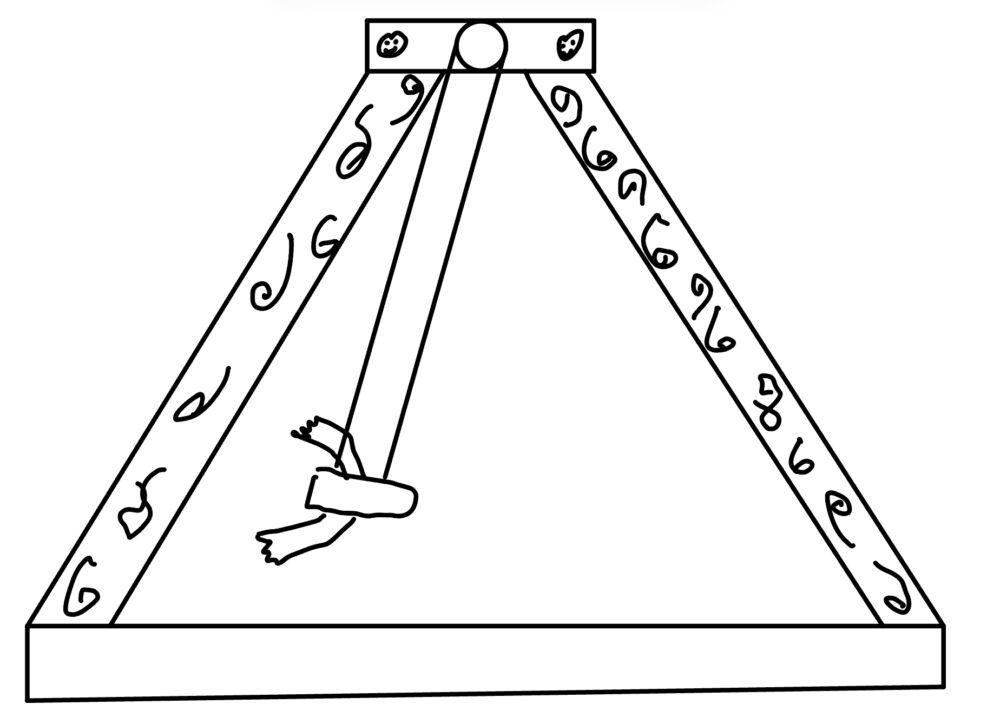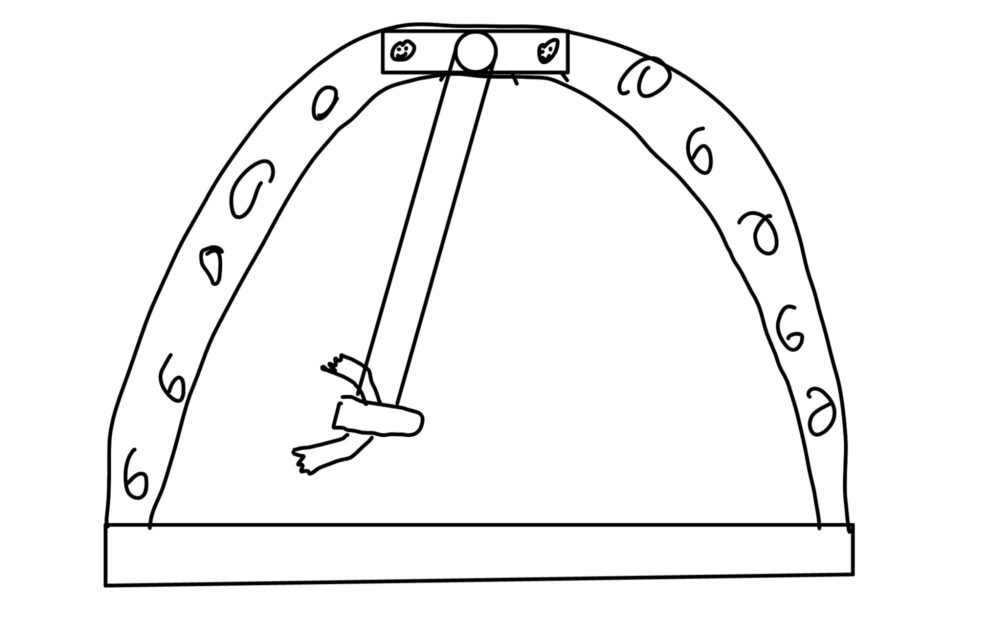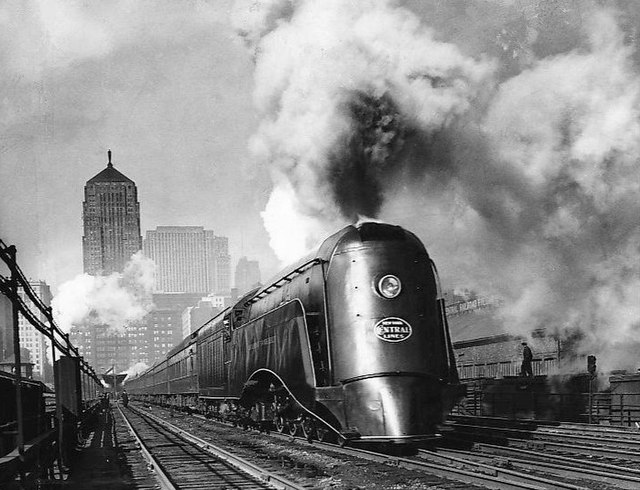Main Project Aesthetics: Plans and Alternatives
For my entire life, I have been interested in moving things. My interests mostly center around trains, which were a very common subject of art deco art and architecture. They were streamlined, and their stations soared high with many concrete and steel components. A lot of posters were made at the time, too, with simplistic yet sleek advertising for the travel that passengers would soon be embarking on. Many trains in this era looked more like rockets than trains, with the functional components being hidden by steel sideskirting. An example of this streamlining is the Commodore Vanderbilt, a 4-6-4 Hudson locomotive built for the New York Central Railroad in 1926 and streamlined in 1934. The streamlining made this 8-year-old locomotive look practically brand new and made the New York Central jump into what they envisioned as the future. I see this era as more of a past vision of an idealistic future and less of a realistic future. It reminds me of the Spongebob episode where “everything is chrome in the future.”
The above image shows the Commodore Vanderbilt Locomotive. It is from International News Photos and was uploaded to Wikimedia Commons, February 22, 1935.
With all that said, for my design project, I am going to create an art deco pendulum. I think movement is really important to the art deco era, so something that has movement as its central component will exemplify the era well. I think Steampunk also has a lot of movement, but I prefer Art Deco due to its more realistic approach to how things work. As a mechanical engineer, I have a strong aversion to mechanical things that don’t make sense. Generally, I find that Steampunk things have a lot of moving parts, but none of them seem to really be doing anything. Art Deco, on the other hand, tends to look to the future with science that actually makes sense. Streamlining, for instance, makes trains, boats, and cars look sleek but can also be utilitarian in that it improves aerodynamics.
The inspiration for the pendulum aspect comes from the trains themselves, or more specifically, the Disneyland Mark I monorail. This early monorail design exemplifies the same idealistic future that many designers foresaw in the art deco era. It is a train that looks like a rocket, and no functional components are visible. The beauty of the train allows a viewer to suspend their disbelief and forget that it rides on a large concrete rail. The train appears to fly, so I thought my pendulum would fly as well.

The above image shows an original sketch that I made for the pendulum. I ended up going with an arch design instead of a triangle.
The structure that the pendulum swings on will take more inspiration from art deco train stations. For instance, Cincinnati Union Station is a very large concrete arch. There are several concrete pillars in the courtyard out front. My inspiration from this will be the shape of the hanger, which will also be an arch. I might make either end of the arch look like a little platform for passengers to board the monorail, but I haven’t settled on this idea yet. I will only not do this idea if I come up with another scenery element that could sit in the same spot.

The above image shows my sketch of the pendulum with an arch instead of a triangle.
Works Cited
Train Lover. “The Commodore Vanderbilt.” Streamliner Memories, November 7, 2022 https://streamlinermemories.info/?p=21656
Anika D. “What is Art Deco? Everything You Need To Know About the Most Popular Early 20th Century Decorative Style.” Artsper Magazine, Mar 17, 2025 https://blog.artsper.com/en/a-closer-look/art-movements-en/what-is-art-deco-decorative-style-meaning/


2 Comments. Leave new
I absolutely love art deco as an aesthetic. My upcycle design conformed to the decopunk aesthetic and reading your project’s application of the style in a Vanderbilt Locomotive inspired pendulum makes me want to adapt my final project to the same aesthetic. Further, I can certainly see why you used these trains as the inspiration for the design. The lofty front profile in the image you provided is straight out of a steampunk show. Thank you for sharing these plans and also introducing me to an awesome mechanical design!
This is a really compelling concept—your passion for trains and motion clearly drives the project, and your thoughtful integration of Art Deco design principles adds a rich layer of historical context. One strength is the way you link the aesthetic to both form and function, particularly through the pendulum’s connection to streamlined locomotives and monorails. Your explanation of why you chose Art Deco over Steampunk is especially insightful—it helps clarify your design values and mechanical priorities. One question I have is: how will you ensure that the pendulum’s motion remains smooth and visually striking while still fitting within the rigid, symmetrical elegance of Art Deco architecture? I’m excited to see how the final piece balances movement and structure, especially with the potential inclusion of platform elements or scenery.